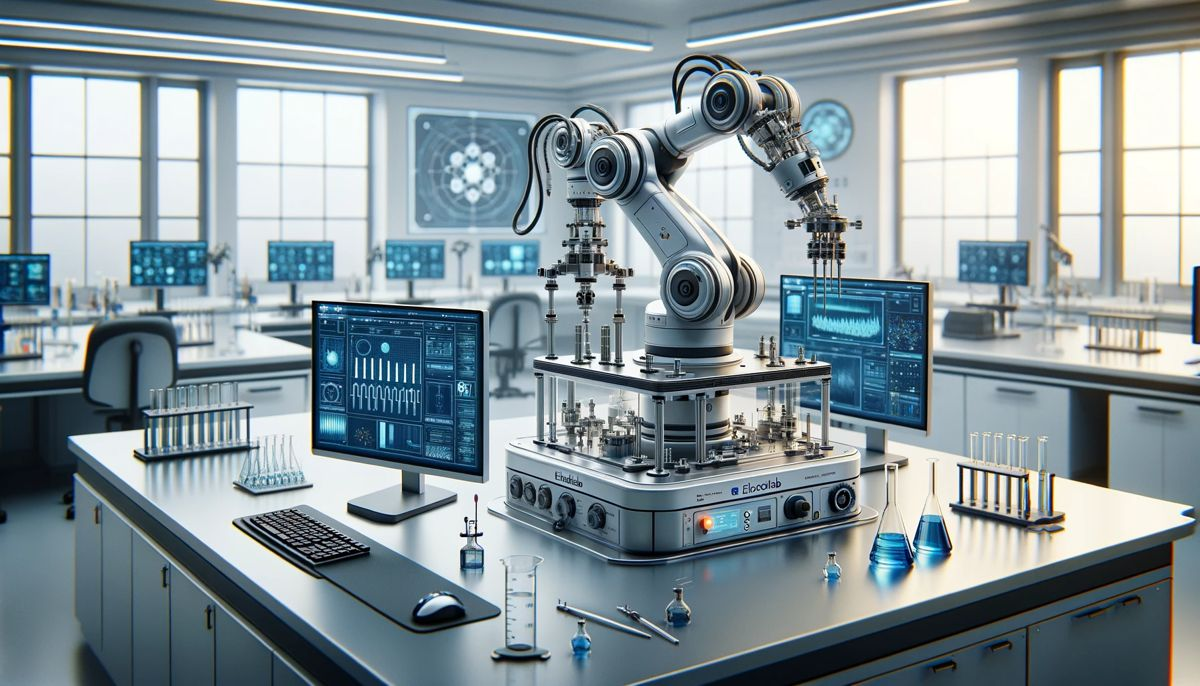The Electrolab: Revolutionizing Electrochemistry with an Autonomous Robot
Introduction
Electrochemistry, the study of electricity and its relation to chemistry, has become increasingly important in the quest for sustainable energy sources and the development of advanced materials. Researchers at the Beckman Institute for Advanced Science and Technology have taken a significant step in this field by creating an innovative solution—an autonomous laboratory robot named the Electrolab. This groundbreaking instrument is designed to streamline electrochemical experiments, automate repetitive tasks, and accelerate the discovery of new materials. In this article, we will explore the features and capabilities of the Electrolab, its potential applications in energy storage and renewable power sources, and the collaborative effort behind its development.
The Need for Automation in Electrochemistry
Electrochemical studies involve complex experiments that often require meticulous attention to detail and repetitive tasks. The manual nature of these experiments can be time-consuming and labor-intensive, hindering the progress of research in the field. To address this challenge, the interdisciplinary team at the University of Illinois Urbana-Champaign, led by Professor Joaquín Rodríguez-López and Professor Charles Schroeder, embarked on a mission to develop an automated solution that would revolutionize the way electrochemical experiments are conducted.
Introducing the Electrolab: An Accessible and Affordable Solution
The Electrolab is a benchtop robot that aims to make electrochemical studies more accessible and affordable. Unlike traditional setups that require expensive equipment and extensive training, the Electrolab is built from common parts and costs approximately $1,000 to construct. This affordability makes it suitable for laboratories of all sizes, promoting widespread adoption and collaboration in the field of electrochemistry.
Hardware Components of the Electrolab
The Electrolab consists of two main components: hardware and software. The hardware is designed to handle solutions, measure electrical currents, and perform electrochemical measurements. It includes a modified 3D printer frame that serves as a solution-handling robot, microfabricated electrode arrays (eChips) for current measurement, and electrochemical hardware for accurate data collection.
Software Capabilities of the Electrolab
Complementing the hardware, the Electrolab is equipped with powerful software capabilities. The software, developed using Python—a popular open-source coding platform—enables users to connect with the Electrolab and perform experiments seamlessly. It offers fully automated data analysis, visualization tools, and plotting features, simplifying the interpretation of experimental results. Furthermore, by integrating machine learning algorithms, the Electrolab can make real-time decisions based on the data it collects, transforming it into an autonomous scientist capable of driving the direction of experiments.
Applications of the Electrolab in Energy Storage and Renewable Power Sources
One of the primary goals of the Electrolab is to accelerate the discovery of new materials for energy storage and promote the use of alternative and renewable power sources. With the increasing demand for sustainable energy solutions, electrochemistry plays a crucial role in developing efficient energy conversion systems and exploring new energy storage materials.
Redox-Flow Batteries: A Key Focus of the Electrolab
Redox-flow batteries, which are used for grid-level energy storage, have gained significant attention in recent years. These batteries utilize organic molecules to store energy and can be easily modified by altering the structure of these molecules. However, identifying the optimal conditions for redox-flow batteries is a time-consuming and labor-intensive task. The Electrolab aims to overcome this bottleneck by automating the process of identifying suitable systems and accelerating the exploration of new redox-active electrolytes.
Green and Sustainable Electrochemistry
In addition to energy storage, the Electrolab opens up possibilities for green and sustainable electrochemical reactions. Traditional chemical processes often rely on harsh chemicals and generate significant amounts of waste. Electrochemistry offers a cleaner alternative, enabling reactions to be driven by electricity and reducing the reliance on harmful chemicals. The Electrolab can be used to explore electrochemical reactions that convert greenhouse gases, such as carbon dioxide, into valuable chemicals for various industries. By leveraging the capabilities of the Electrolab, researchers can contribute to the development of environmentally friendly chemical processes.
The Collaborative Effort Behind the Electrolab
The development of the Electrolab was a collaborative effort involving researchers from various disciplines, including chemistry, materials science, engineering, and programming. Led by Professor Rodríguez-López and Professor Schroeder, the team worked tirelessly to create an accessible and versatile platform for electrochemical studies. Their goal was not only to advance battery science and technology but also to foster knowledge-sharing and collaboration among researchers.
Conclusion
The Electrolab represents a significant advancement in the field of electrochemistry. By automating complex experiments, analyzing data in real-time, and enabling the exploration of new materials, this autonomous laboratory robot streamlines the research process and accelerates scientific discoveries. With its affordability, accessibility, and potential applications in energy storage and renewable power sources, the Electrolab has the potential to revolutionize the field of electrochemistry and contribute to the development of sustainable energy solutions. As researchers continue to push the boundaries of science, the Electrolab will serve as a valuable tool in their quest for a greener and more sustainable future.
